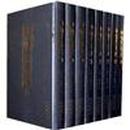
微分几何与积分几何(英文版)
Smm 12 surveys of modern mathematics
¥ 388 九五品
仅1件
浙江宁波
认证卖家担保交易快速发货售后保障
作者陈省身 著
出版社高等教育出版社
出版时间2016-10
版次1
印刷时间2016-10
印次1
装帧精装
上书时间2022-08-12
- 在售商品 暂无
- 平均发货时间 13小时
- 好评率 暂无
- 店主推荐
- 最新上架
商品详情
- 品相描述:九五品
图书标准信息
- 作者 陈省身 著
- 出版社 高等教育出版社
- 出版时间 2016-10
- 版次 1
- ISBN 9787040465181
- 定价 79.00元
- 装帧 精装
- 开本 16开
- 纸张 胶版纸
- 页数 246页
- 字数 310千字
- 正文语种 英语
- 【内容简介】
- 分析学包括微分学与积分学。在几何中,也有对应的微分几何和积分几何。《微分几何与积分几何(英文版)》介绍几何的这两个方面,包含四部分。第一部分内容是1971年陈省身在国际数学家大会上所做的一小时报告,向学生和非专家介绍微分几何当时的整体面貌。作者首先简要介绍历史概况,概述了一些基本概念和工具,并介绍了当时微分几何的五个分支:正曲率流形、曲率和欧拉特征、小子流形、等距映射、全纯映射。第二部分系统地介绍了积分几何。第三部分为微分流形,是作者在1959年微分几何正成为数学的一个主要领域时所写的讲义,该讲义给出了微分流形和微分几何的平稳和快速的引入,给当时的数学界送来一股清新之风。第四部分为微分几何,提供了一个高效但通俗易懂的介绍,并给出了对整个数学的全局的观点。《微分几何与积分几何(英文版)》不仅对初学者非常有价值,对科研工作者也是很好的补充阅读材料。
- 【目录】
-
Part Ⅰ What is Geometry and Differential Geometry
1 What Is Geometry?
1.1 Geometry as a logical system; Euclid
1.2 Coordinatization of space; Descartes
1.3 Space based on the group concept; Klein's Erlanger Programm
1.4 Localization of geometry; Gauss and Riemann
1.5 Globalization; topology
1.6 Connections in a fiber bundle; Elie Cartan
1.7 An application to biology
1.8 Conclusion
2 Differential Geometry; Its Past and Its Future
2.1 Introduction
2.2 The development of some fundamental notions and tools
2.3 Formulation of some problems with discussion of related results
2.3.1 Riemannian manifolds whose sectional curvatures keep a constant sign
2.3.2 Euler-Poincare characteristic
2.3.3 Minimal submanifolds
2.3.4 Isometric mappings
2.3.5 Holomorphic mappings
Part Ⅱ Lectures on Integral Geometry
3 Lectures on Integral Geometry
3.1 Lecture Ⅰ
3.1.1 Buffon's needle problem
3.1.2 Bertrand's parabox
3.2 Lecture Ⅱ
3.3 Lecture Ⅲ
3.4 Lecture Ⅳ
3.5 Lecture Ⅴ
3.6 Lecture Ⅵ
3.7 Lecture Ⅶ
3.8 Lecture Ⅷ
Part Ⅲ Differentiable Manifolds
4 Multilinear Algebra
4.1 The tensor (or Kronecker) product
4.2 Tensor spaces
4.3 Symmetry and skew-symmetry; Exterior algebra
4.4 Duality in exterior algebra
4.5 Inner product
5 Differentiable Manifolds
5.1 Definition of a differentiable manifold
5.2 Tangent space
5.3 Tensor bundles
5.4 Submanifolds; Imbedding of compact manifolds
6 Exterior Differential Forms
6.1 Exterior differentiation
6.2 Differential systems; Frobenius's theorem
6.3 Derivations and anti-derivations
6.4 Infinitesimal transformation
6.5 Integration of differential forms
6.6 Formula of Stokes
7 Affine Connections
7.1 Definition of an affine connection: covariant differential
7.2 The principal bundle
7.3 Groups of holonomy
7.4 Affine normal coordinates
8 Riemannian Manifolds
8.1 The parallelism of Levi-Civita
8.2 Sectional curvature
8.3 Normal coordinates; Existence of convex neighbourhoods
8.4 Gauss-Bonnet formula
8.5 Completeness
8.6 Manifolds of constant curvature
Part Ⅳ Lecture Notes on Differentiable Geometry
9 Review of Surface Theory
9.1 Introduction
9.2 Moving frames
9.3 The connection form
9.4 The complex structure
10 Minimal Surfaces
10.1 General theorems
10.2 Examples
10.3 Bernstein -Osserman theorem
10.4 Inequality on Gaussian curvature
11 Pseudospherical Surface
11.1 General theorems
11.2 Baicklund's theorem
点击展开
点击收起
— 没有更多了 —























以下为对购买帮助不大的评价